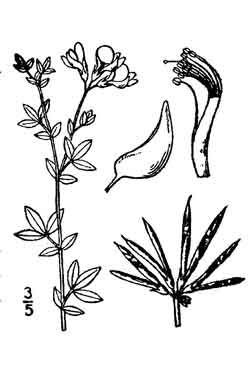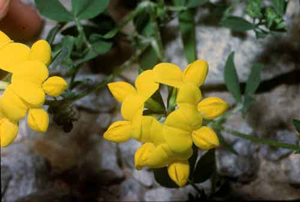Birdsfoot trefoil (Lotus corniculatus)


Birdsfoot trefoil is a deep-rooted, short-lived perennial that is adapted to cooler, temperate climates. Birdsfoot trefoil likes upland loams and well drained soils and is tolerant of drought and moderate soil acidity. Birdsfoot trefoil has fine stems, bright yellow flowers, and small tap roots without rhizomes or stolons. It is subject to severe damage from Rhizoctonia, a root and crown fungal disease. It requires a special inoculum for first plantings and is slow to become established. It reseeds under proper management, contributing to its persistence, so pastures should be managed to permit seed formation. Its persistence and yield of animal products are greater if control-grazed. The plants grow 12 to 30 inches tall, depending on whether the variety is prostrate or semi-erect and yields 2 to 3 tons of dry herbage per acre in mixtures with grasses. Its nutritive value is equal to or greater than that of alfalfa. Birdsfoot trefoil is high in quality (70 to 78% digestible). Its quality declines slightly as plant matures. Birdsfoot trefoil is a good source of protein, calcium, phosphorus, and magnesium. Goats graze both leaves and the herbaceous stems, which remains highly digestible. Plants are highly palatable but contain tannins that prevent bloat and could be important to reduce gastrointestinal parasite loads. It grows well in association with orchardgrass and with Kentucky bluegrass whereas tall fescue is often too competitive.
Luginbuhl, J-M. 2006. Pastures for Meat Goats. In: Meat Goat Production Handbook, ed. T.A. Gipson, R.C. Merkel, K. Williams, and T. Sahlu, Langston University, ISBN 1-880667-04-5.
